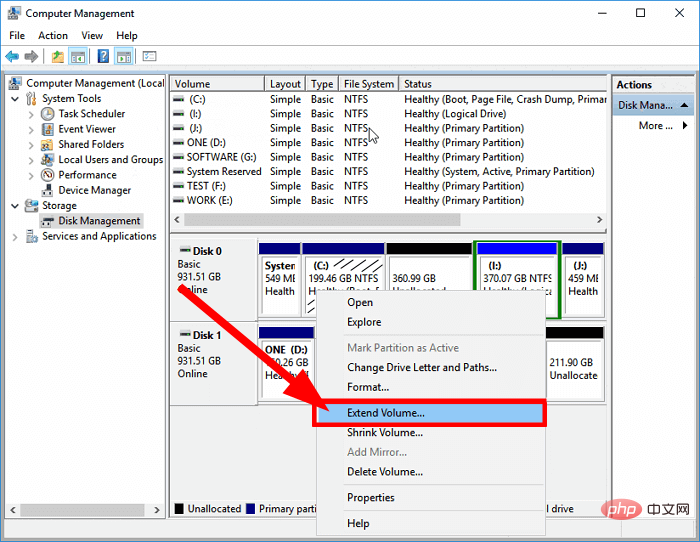 System Tutorial
System Tutorial LINUX
LINUX Install CentOS array and CentOS array card driver: create a stable and efficient Linux system
Install CentOS array and CentOS array card driver: create a stable and efficient Linux systemphp editor Baicao brings you an article about "Installing CentOS Arrays and CentOS Installation Array Card Drivers: Creating a Stable and Efficient Linux System". In this article, we will introduce how to install a CentOS array and the steps to install the CentOS array card driver to help you build a stable and efficient Linux system. Whether you are a novice or an experienced user, you can easily follow our guidance and complete the installation process. Through optimization of array technology and drivers, your system will achieve better performance and stability. Let’s explore together!

Installing CentOS Array
1. Before installing CentOS, make sure you have prepared the hardware for the array card and that the computer has been connected to the array card. .
2. Insert the CentOS installation media into the computer, restart the computer, enter the CentOS installation interface, and select the "Install CentOS" option.
3. During the installation process, select the "Custom" partitioning method so that you can manually configure the hard disk partition on the array card.
4. When creating a partition, select the hard disk device on the array card and create the appropriate partition size and file system according to your needs.
5. After completing the partition configuration, continue to complete the CentOS installation process until the system installation is completed.
Install array card driver
1. After the CentOS installation is completed, log in to the system.
2. Open a terminal or console for command line operations.
3. Use the command line to download and install the driver for the array card. You can find the corresponding driver on the official website of the array card manufacturer.
4. Run the driver installation package and follow the prompts to complete the driver installation.
5. Restart the computer to make the driver take effect.
Configuring the array card
1. After restarting the computer, log in to the CentOS system.
2. Open a terminal or console and run the array card configuration tool. This tool is usually automatically added to the system menu after the driver installation is completed.
3. Configure the array card according to the prompts of the configuration tool. You can choose to create different array levels to meet your data redundancy and performance requirements.
4. After completing the configuration of the array card, make sure that all hard disk devices are working properly and the data redundancy function is in effect.
Through the above steps, you have successfully installed the CentOS array and array card driver, and configured the array card to meet your needs. The use of the array card can improve the stability of the system and data security. Your data is protected at the hardware level. If you encounter any problems or failures during use, it is recommended to consult relevant documents or seek technical support in a timely manner.
Share: A little LINUX knowledge
In a Linux system, you can use the command line tool "top" to view the real-time process and resource usage of the system, just in the terminal or console Enter the "top" command to display the list of currently running processes and the usage of resources such as CPU and memory. This tool is very useful for monitoring system performance and troubleshooting problems.
The above is the detailed content of Install CentOS array and CentOS array card driver: create a stable and efficient Linux system. For more information, please follow other related articles on the PHP Chinese website!
 centos用什么命令可查版本号Mar 03, 2022 pm 06:10 PM
centos用什么命令可查版本号Mar 03, 2022 pm 06:10 PM查版本号的命令:1、“cat /etc/issue”或“cat /etc/redhat-release”,可输出centos版本号;2、“cat /proc/version”、“uname -a”或“uname -r”,可输出内核版本号。
 centos重启网卡的方法是什么Feb 22, 2023 pm 04:00 PM
centos重启网卡的方法是什么Feb 22, 2023 pm 04:00 PMcentos重启网卡的方法:1、对于centos6的网卡重启命令是“service network restart”;2、对于centos7的网卡重启命令是“systemctl restart network”。
 centos php怎么安装opcacheJan 19, 2023 am 09:50 AM
centos php怎么安装opcacheJan 19, 2023 am 09:50 AMcentos php安装opcache的方法:1、执行“yum list php73* | grep opcache”命令;2、通过“yum install php73-php-opcache.x86_64”安装opcache;3、使用“find / -name opcache.so”查找“opcache.so”的位置并将其移动到php的扩展目录即可。
 centos 怎么离线安装 mysqlFeb 15, 2023 am 09:56 AM
centos 怎么离线安装 mysqlFeb 15, 2023 am 09:56 AMcentos离线安装mysql的方法:1、将lib中的所有依赖上传到linux中,并用yum命令进行安装;2、解压MySQL并把文件复制到想要安装的目录;3、修改my.cnf配置文件;4、复制启动脚本到资源目录并修改启动脚本;5、将mysqld服务加入到系统服务里面;6、将mysql客户端配置到环境变量中,并使配置生效即可。
 centos 7安装不出现界面怎么办Jan 03, 2023 pm 05:33 PM
centos 7安装不出现界面怎么办Jan 03, 2023 pm 05:33 PMcentos7安装不出现界面的解决办法:1、选择“Install CentOS 7”,按“e”进入启动引导界面;2、 将“inst.stage2=hd:LABEL=CentOS\x207\x20x86_64”改为“linux dd”;3、重新进入“Install CentOS 7”,按“e”将“hd:”后的字符替换成“/dev/sdd4”,然后按“Ctrl+x”执行即可。
 centos 怎么删除 phpFeb 24, 2021 am 09:15 AM
centos 怎么删除 phpFeb 24, 2021 am 09:15 AMcentos删除php的方法:1、通过“#rpm -qa|grep php”命令查看全部php软件包;2、通过“rpm -e”命令卸载相应的依赖项;3、重新使用“php -v”命令查看版本信息即可。
 centos中ls命令不显示颜色怎么办Apr 20, 2022 pm 03:16 PM
centos中ls命令不显示颜色怎么办Apr 20, 2022 pm 03:16 PM方法:1、利用“vim ~/.bashrc”编辑用户目录(~)下的“.bashrc”文件;2、在文件内添加“alias ls="ls --color"”;3、利用“:wq!”命令保存文件内的更改;4、“exit”命令退出终端后重新连接即可。
 如何在 CentOS 9 Stream 上安装 NagiosMay 10, 2023 pm 07:58 PM
如何在 CentOS 9 Stream 上安装 NagiosMay 10, 2023 pm 07:58 PM我们的PC中有一个磁盘驱动器专门用于所有与Windows操作系统相关的安装。该驱动器通常是C驱动器。如果您还在PC的C盘上安装了最新的Windows11操作系统,那么所有系统更新(很可能是您安装的所有软件)都会将其所有文件存储在C盘中。因此,保持此驱动器没有垃圾文件并在C驱动器中拥有足够的存储空间变得非常重要,因为该驱动器拥有的空间越多,您的Windows11操作系统运行起来就越顺畅。但是您可以在磁盘驱动器上增加多少空间以及可以删除多少文件是有限制的。在这种情况下,


Hot AI Tools

Undresser.AI Undress
AI-powered app for creating realistic nude photos

AI Clothes Remover
Online AI tool for removing clothes from photos.

Undress AI Tool
Undress images for free

Clothoff.io
AI clothes remover

AI Hentai Generator
Generate AI Hentai for free.

Hot Article

Hot Tools

EditPlus Chinese cracked version
Small size, syntax highlighting, does not support code prompt function

SecLists
SecLists is the ultimate security tester's companion. It is a collection of various types of lists that are frequently used during security assessments, all in one place. SecLists helps make security testing more efficient and productive by conveniently providing all the lists a security tester might need. List types include usernames, passwords, URLs, fuzzing payloads, sensitive data patterns, web shells, and more. The tester can simply pull this repository onto a new test machine and he will have access to every type of list he needs.

Zend Studio 13.0.1
Powerful PHP integrated development environment

Atom editor mac version download
The most popular open source editor

SublimeText3 Chinese version
Chinese version, very easy to use





